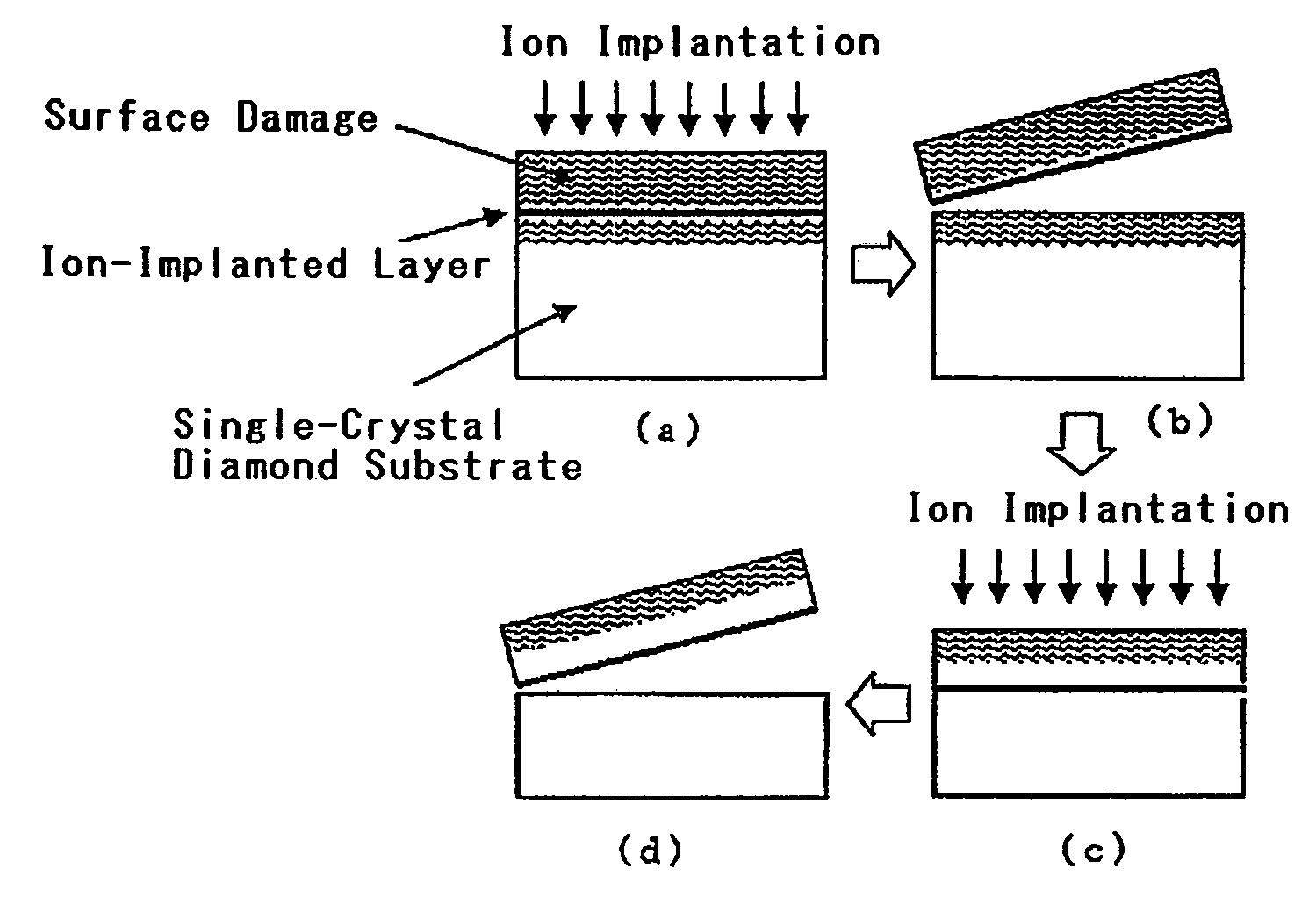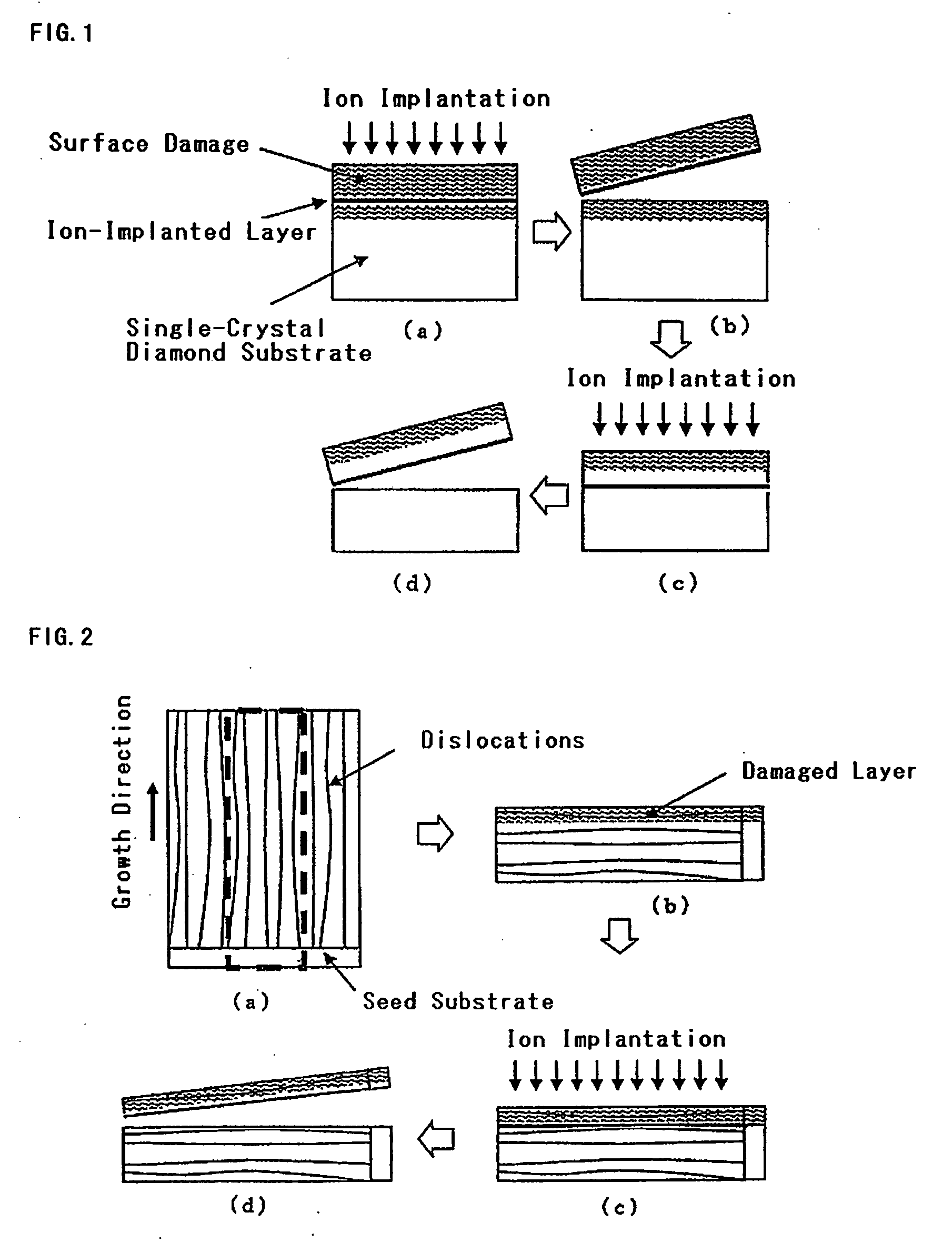Removal method of surface damage of single crystal diamond
- Summary
- Abstract
- Description
- Claims
- Application Information
AI Technical Summary
Benefits of technology
Problems solved by technology
Method used
Image
Examples
example 1
[0064]An Ib single-crystal diamond (100) substrate, synthesized by a high-temperature high-pressure synthesis method, and mechanically polished to a size of 9.3×9.5×1.05 mm3, was used as a substrate to be processed, and the removal of surface damage was performed according to the following process.
[0065]First, carbon ions were implanted into the single-crystal diamond substrate at an energy level of 3 MeV and a dose of 2×1016 ions / cm2, using a 1.5 MV tandem accelerator. The calculated value of the depth of implanted ions was about 1.6 μm. This irradiation caused the color of the diamond substrate to change from pale yellow to black, thus confirming the formation of a non-diamond layer.
[0066]Next, the single-crystal diamond substrate was heat-treated using a commercial microwave plasma CVD apparatus, causing the graphitization of the non-diamond layer to proceed. The heat treatment was performed for 25 minutes at a substrate temperature of 1,130° C., a pressure of 24 kPa, and a hydro...
example 2
[0070]On an Ib diamond (100) substrate with a size of about 6 x 6 mm synthesized by a high-temperature high-pressure synthesis method, a CVD diamond was grown to a thickness of 8.7 mm by a microwave plasma CVD method. The resulting crystal was cut along the {100} plane in parallel with the growth direction to separate a portion of the crystal, and the surface of the separated crystal was polished to prepare a single-crystal diamond substrate in the form of a 7×8.5×1 mm3 trapezoid. This substrate was observed by transmission X-ray topography to confirm the inclusion of many dislocations toward a direction substantially in parallel with the growth direction.
[0071]According to the same process as in Example 1, the {100} surface of the single-crystal diamond substrate in parallel with the growth direction was subjected to the implantation of carbon ions and heat treatment, growth of a single-crystal diamond film for surface damage evaluation, and removal of a surface layer by electroche...
PUM
 Login to View More
Login to View More Abstract
Description
Claims
Application Information
 Login to View More
Login to View More - R&D
- Intellectual Property
- Life Sciences
- Materials
- Tech Scout
- Unparalleled Data Quality
- Higher Quality Content
- 60% Fewer Hallucinations
Browse by: Latest US Patents, China's latest patents, Technical Efficacy Thesaurus, Application Domain, Technology Topic, Popular Technical Reports.
© 2025 PatSnap. All rights reserved.Legal|Privacy policy|Modern Slavery Act Transparency Statement|Sitemap|About US| Contact US: help@patsnap.com


